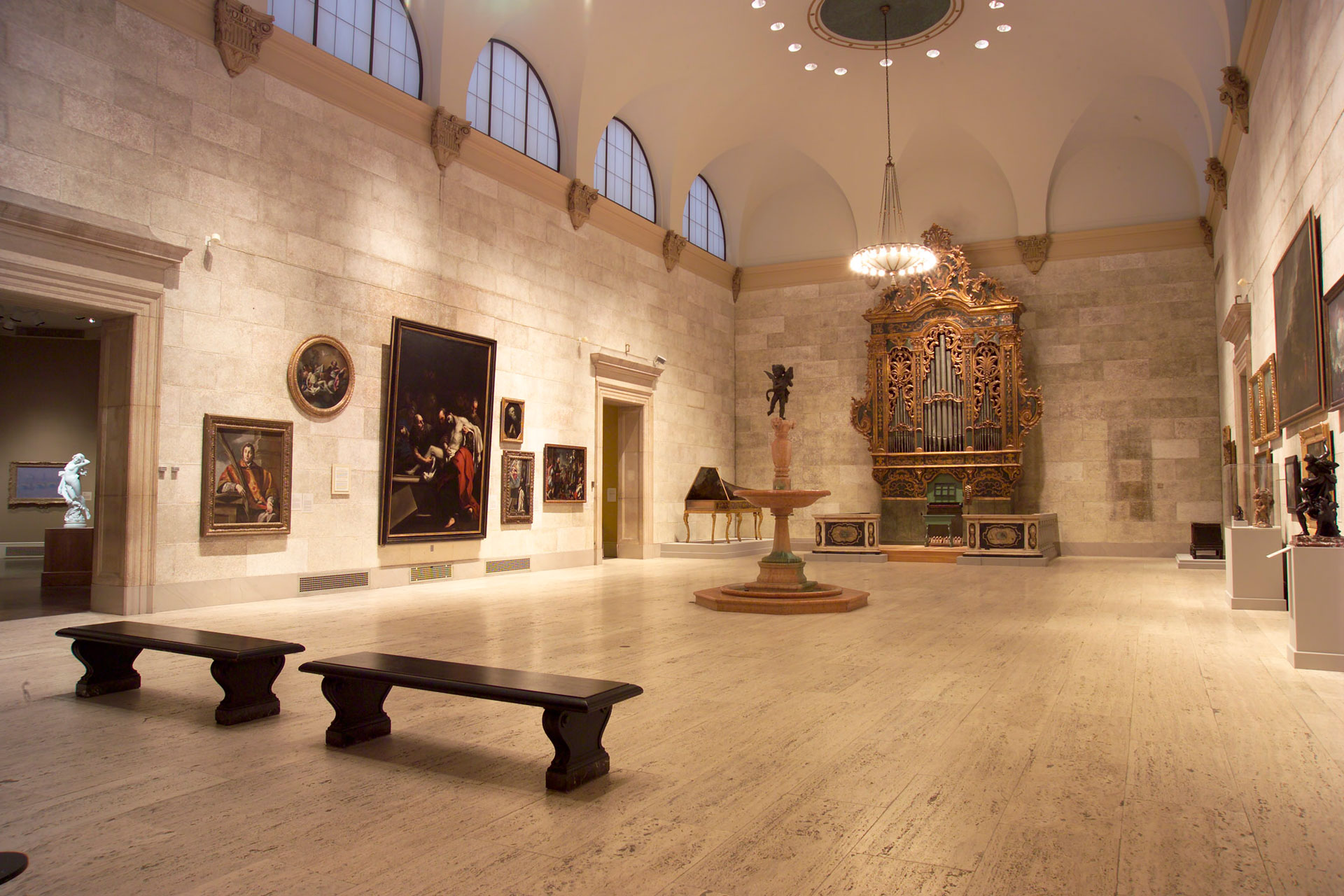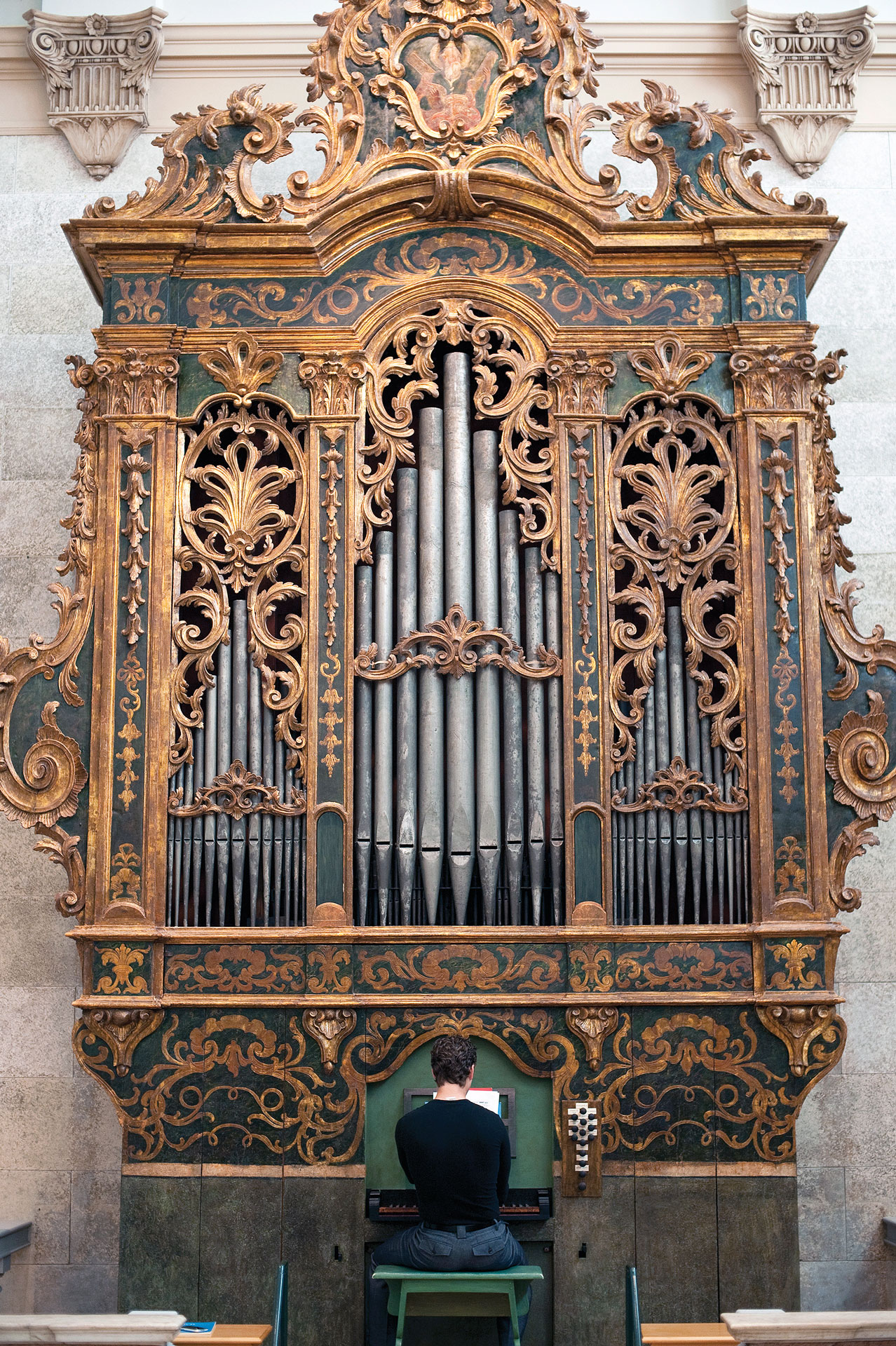

The Eastman School of Music has brought the sounds of the past to Rochester by installing an historic full-size Italian Baroque organ in the University of Rochester’s Memorial Art Gallery. The magnificent instrument, originally built around 1770 in the region of central Italy, represents the genesis of Baroque organ music played and taught worldwide. With its well-preserved pipes crafted to render vocal and instrumental sonorities of its time, the organ is a “living recording” of sounds made hundreds of years ago. After being fully restored in Germany, it was installed in the Gallery’s Fountain Court in the fall of 2005, making Rochester the only place in North America to hear authentic performances of 18th-century organ music written for a large Italian instrument. In addition to enhancing organ study at the Eastman School, the organ benefits the singers and instrumentalists who perform with the instrument, visiting scholars, practitioners of organ restoration, and visitors to the Memorial Art Gallery.
Installation of the Italian Baroque Organ at the Memorial Art Gallery, June 2005; feat. David Higgs, organ.
The inauguration of the Italian Baroque Organ took place at the 2005 EROI Festival. For further information on the process of bringing this instrument to Rochester, see the 2005 press release When the Paths of Music, Art, and Science Converge Into Sound.
The Italian Baroque Organ at the Memorial Art Gallery
The instrument is owned by the Eastman School of Music, placed in the Fountain Court of the University of Rochester’s Memorial Art Gallery, 500 University Avenue, Rochester, New York, 14607.
Builder unknown, c.1770. | Restored by Gerald Woehl, Marburg, Germany, 2005. | Inaugurated in October, 2005.
Specification, 14 stops
Manual
Compass: CDEFGA-c’’’
Principale bassi 8
Principale soprani 8
Ottava (4ft)
Decimaquinta (2 ft treble reconstructed pipes)
Decimanona (1 1/3 ft)
Vigesima Seconda (1 ft)
Vigesima Sesta e Nona (1/2ft and 1/3 ft)
Flauto in ottava (4ft)
Flauto in duodecima (2 2/3ft)
Flauto in XVII (1 3/5ft, from F)
Voce Umana (from D)
Tromboncini bassi
Tromboncini soprani
Pedal
(Pull-down compass: CDEFGA-g #)
Contrabassi 16 (C, D, E, F, G, A, B flat, B, c)
(new: c#, d#, f#, g#)
Tamburo (c#, d#, f#, g#)
Tiratutti (Ripieno)
Uccelliera
New pipes: Tromboncini and Octave 2ft treble. Reconstruction of Tromboncini: Organ workshop of Pradella, Italy.
Reference group: Edoardo Bellotti, Harald Vogel, Hans Davidsson, Nancy Norwood. The instrument was discovered by Woehl in an antique store in Florence, Italy in 1979. It was to be sold in parts, but Woehl persuaded the dealer to sell all of it, and purchased the whole instrument. He visited Rochester in 2001, found it the ideal home for the instrument, and agreed to restore and sell the organ to the Eastman School of Music.
Size: 22 feet tall, 9 feet wide, 600 pipes.
It is the only full-sized Italian baroque organ in North America.
The instrument contains parts from different periods. The ornamented case represents 18-century high-baroque aesthetics. The windchest and much of the pipe-work is older, possibly from the late 17th or early 18th century. The organ was enlarged in the 1770s, and was changed again in the 19th century, when for instance the compass was enlarged, but with poor craftsmanship. The reference group decided to restore the instrument to its 1770 condition. That year is inscribed in two pipes, Principale, (#45/C), and Voce Umana (#45/C).
The keyboard has been kept in the condition in which it was found, therefore one can see and feel the grooves of centuries of fingers playing on it.
This organ is representative of a typical Italian organ.
Characteristics
One manual
Small pedalboard with short octave
A single (spring or slider) wind-chest
Limited number of stops, the backbone is the divided stops of the Ripieno
Soft vocal sound of Principale 8ft (the aesthetic was close to the vocal repertory)
Additions popular in the 18th and 19th centuries:
Uccelliera (bird)
Tamburo (drum, which is made of 4 low pitches (c#, d#, f#, g#)
Stops for concerto-style and solos
In 1770, addition of:
Reed stop (lost)
Flauto in ottava
Flauto in XVII
Contrabassi (16’)
Case
The facade has three pipe fields, common in central and southern Italy. The side-panels are decorated with 10 foot high paintings of flowers.
Picture of St. Andrews at the top.
Lavishly ornamented case, maybe connected to Italian court culture.